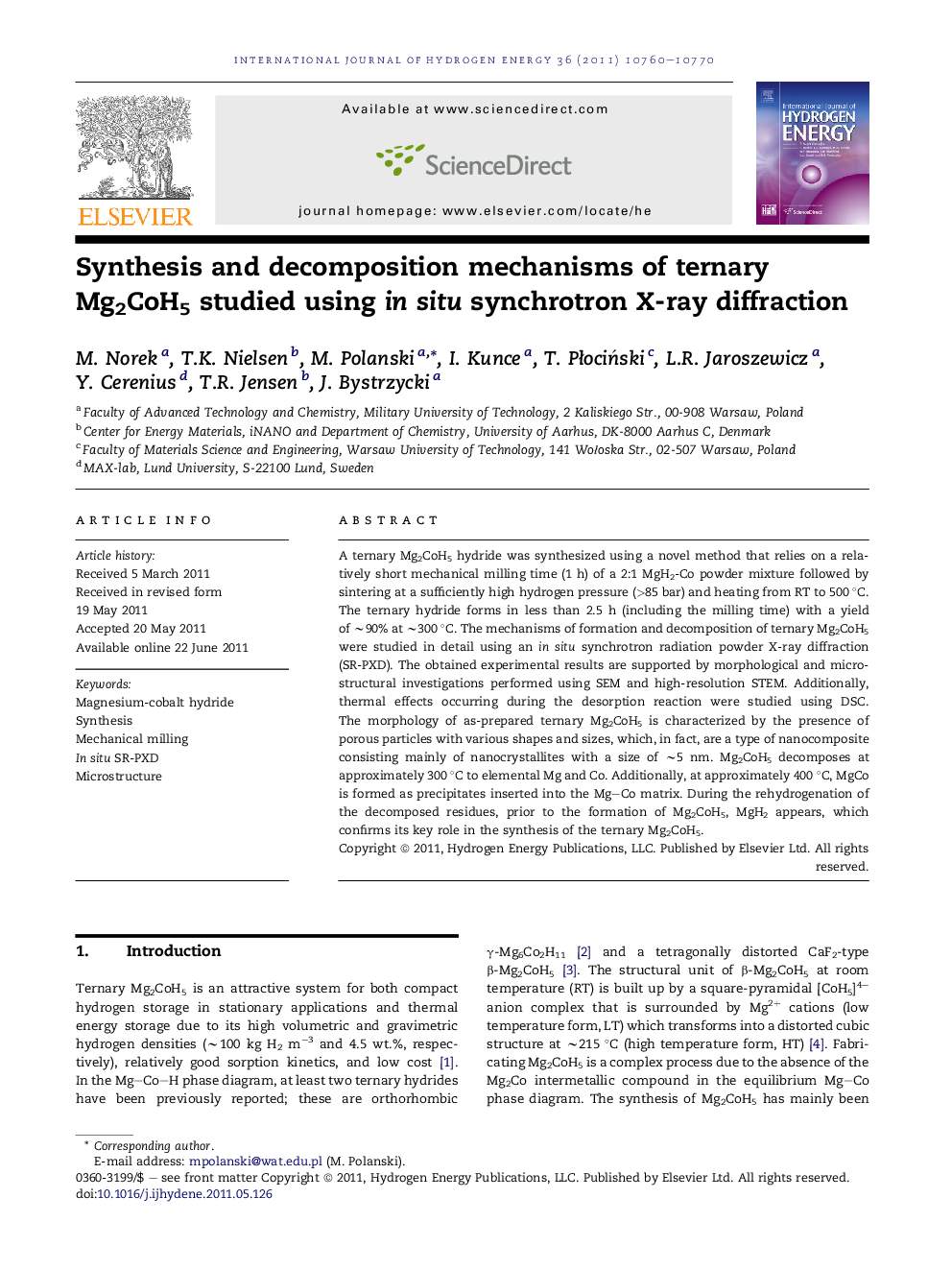| Article ID | Journal | Published Year | Pages | File Type |
|---|---|---|---|---|
| 1277544 | International Journal of Hydrogen Energy | 2011 | 11 Pages |
A ternary Mg2CoH5 hydride was synthesized using a novel method that relies on a relatively short mechanical milling time (1 h) of a 2:1 MgH2-Co powder mixture followed by sintering at a sufficiently high hydrogen pressure (>85 bar) and heating from RT to 500 °C. The ternary hydride forms in less than 2.5 h (including the milling time) with a yield of ∼90% at ∼300 °C. The mechanisms of formation and decomposition of ternary Mg2CoH5 were studied in detail using an in situ synchrotron radiation powder X-ray diffraction (SR-PXD). The obtained experimental results are supported by morphological and microstructural investigations performed using SEM and high-resolution STEM. Additionally, thermal effects occurring during the desorption reaction were studied using DSC. The morphology of as-prepared ternary Mg2CoH5 is characterized by the presence of porous particles with various shapes and sizes, which, in fact, are a type of nanocomposite consisting mainly of nanocrystallites with a size of ∼5 nm. Mg2CoH5 decomposes at approximately 300 °C to elemental Mg and Co. Additionally, at approximately 400 °C, MgCo is formed as precipitates inserted into the Mg–Co matrix. During the rehydrogenation of the decomposed residues, prior to the formation of Mg2CoH5, MgH2 appears, which confirms its key role in the synthesis of the ternary Mg2CoH5.
► We studied the mechanism of the magnesium-cobalt hydride formation and decomposition from ball-milled MgH2 and Co mixture. ► We received over 90% yield in very short processing time. ► Mg2CoH5 forms directly from MgH2 and Co under hydrogen pressure. ► Mg2CoH5 decomposes to Mg and Co mixture, however afterward elements reacts to form Mg–Co intermetallic phase. ► Nanocomposite structure was observed.
